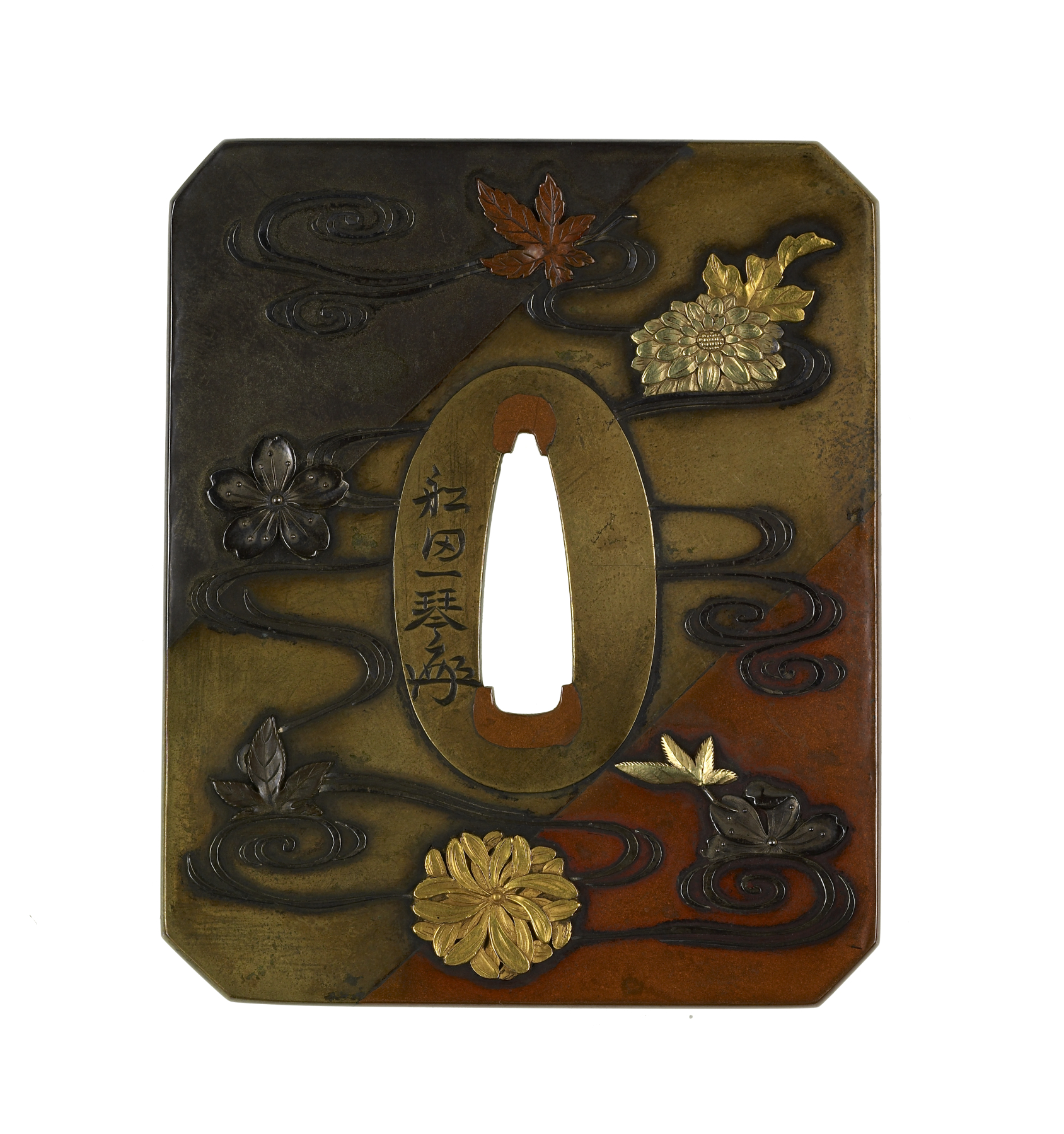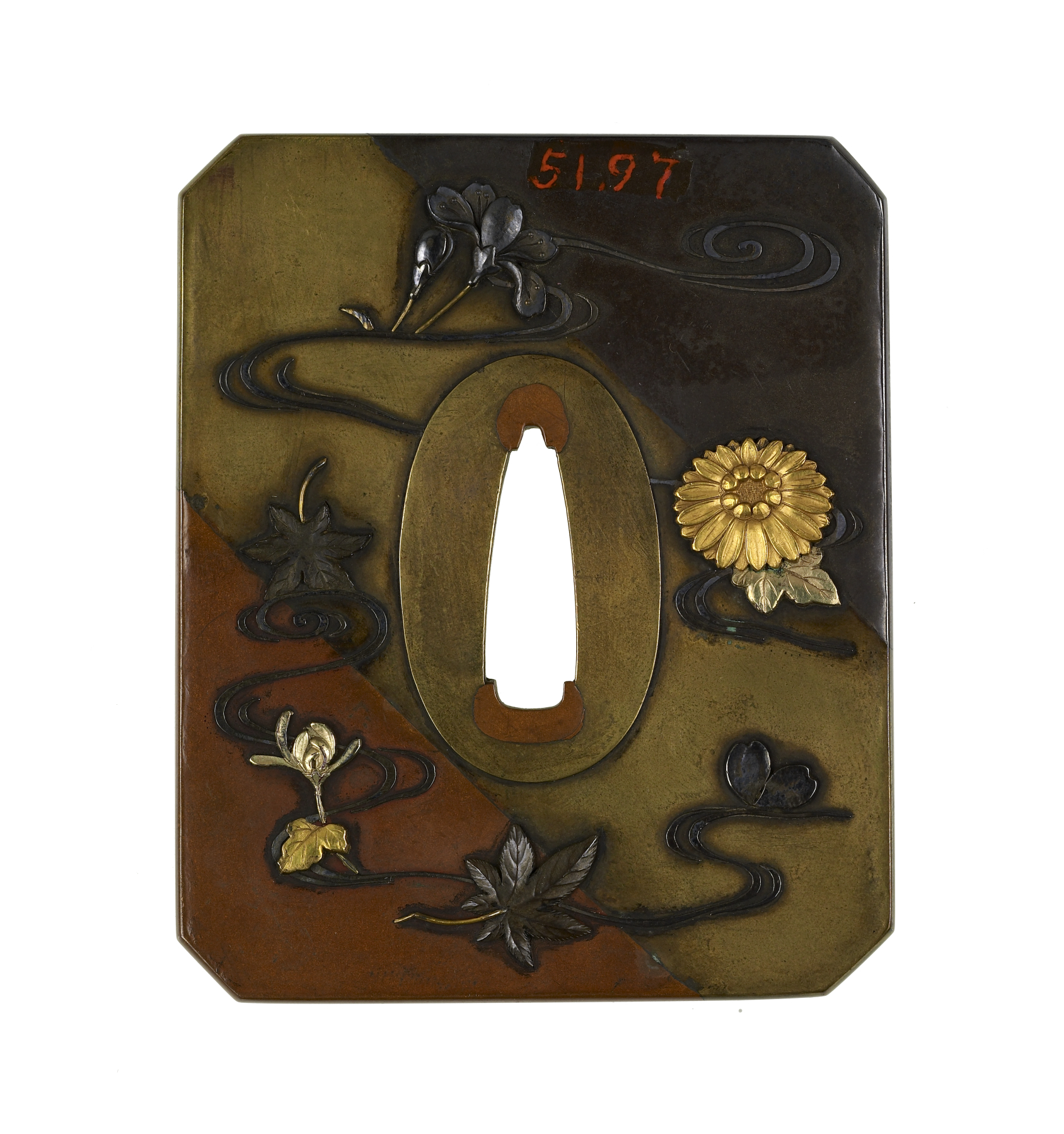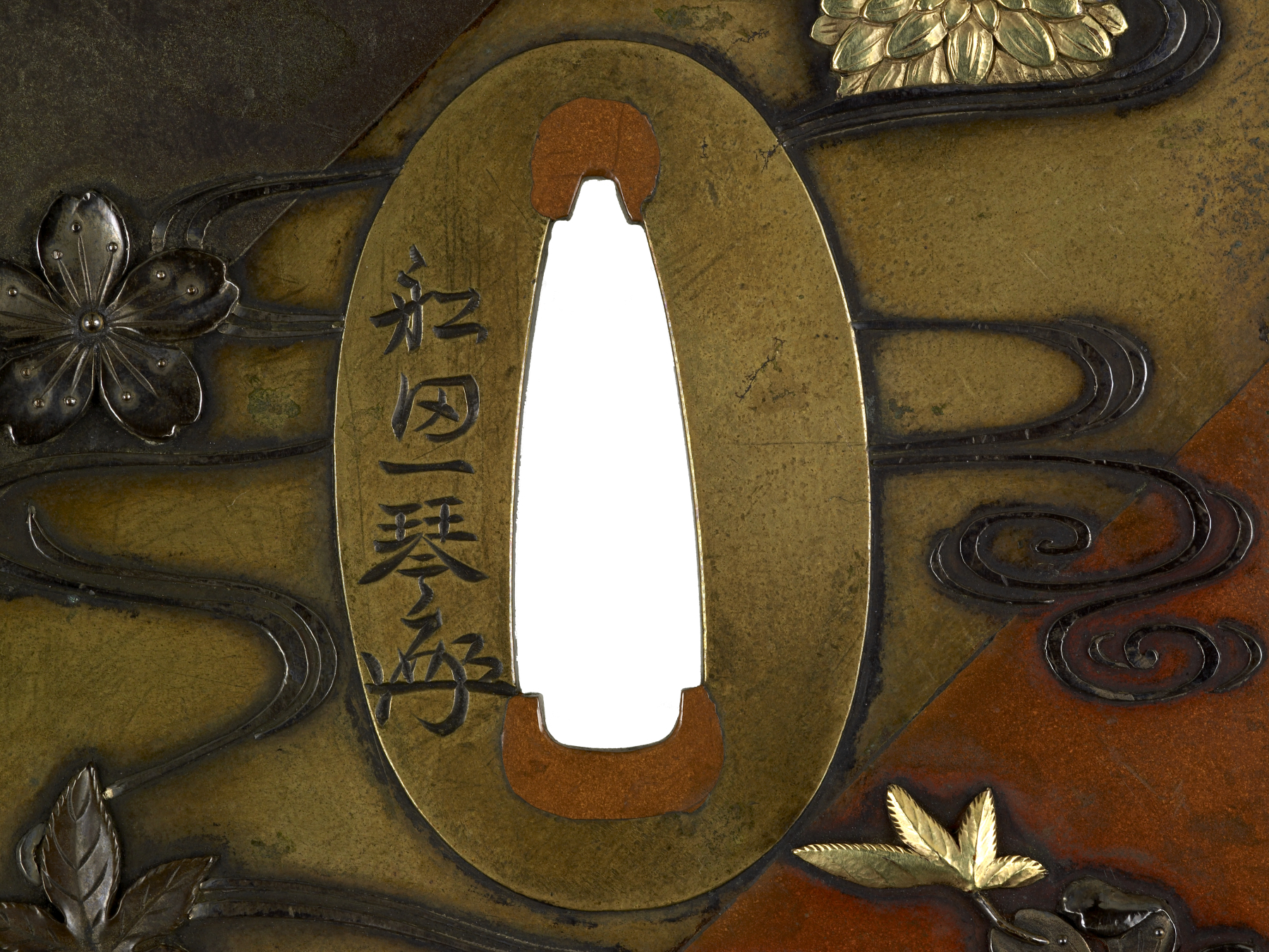Tsuba with Seasonal Flowers
(Japanese Military Armor)
The curved lines on this tsuba represent a stylized stream, upon which float flowers symbolizing the seasons. Cherry blossoms on the left and lower right are associated with spring time. The magnolia on the bottom is a emblem of summer. Maple leaves and the chrysanthemum on the upper right indicate autumn. The unusual three toned body of the tsuba was created by using three different types of metal. The upper section contains an alloy of silver and copper called "shibuichi." The central section contains tin and zinc, known as "sentoku," while the lower section is primarily copper.
Inscription
Provenance
Provenance (from the French provenir, 'to come from/forth') is the chronology of the ownership, custody, or location of a historical object. Learn more about provenance at the Walters.
Henry Walters, Baltimore [date and mode of acquisition unknown]; Walters Art Museum, 1931, by bequest.
Geographies
Japan, Shonai
(Place of Origin)
Japan, Tokyo (Edo) (Place of Origin)
Measurements
3 3/16 x 2 5/8 x 3/16 in. (8.1 x 6.7 x 0.45 cm)
Credit Line
Acquired by Henry Walters
Location in Museum
Not on view
Accession Number
In libraries, galleries, museums, and archives, an accession number is a unique identifier assigned to each object in the collection.
In libraries, galleries, museums, and archives, an accession number is a unique identifier assigned to each object in the collection.
51.97






